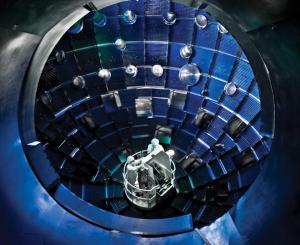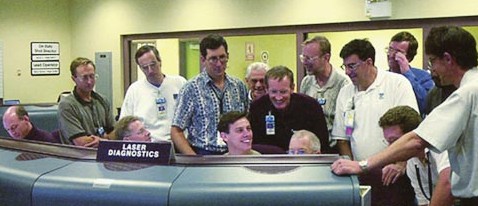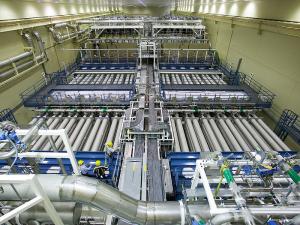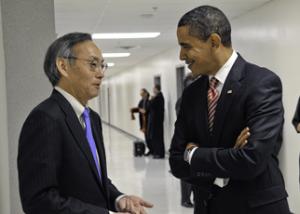
At The Lawrence Livermore Laboratory in California, National Ignition Facility scientists fired up the $3.5 billion laser for its first use against a solid target. The NIF's 192 lasers were concentrated and funneled into a 30-foot target chamber, and blasted a gold container holding a cryogenically-cooled composite of deuterium, tritium and hydrogen, causing a shower of neutrons. The test was considered a success.
"From the view of showing the facility's capability it was spectacular. Everything worked." NIF Director, Ed Moses told Scientific American.

But the laser burst was only about 75 percent of its full capacity and the capsule deliberately wasn't filled with isotopes necessary for fusion. According to Wired.com: "About 10 trillion neutrons zoomed out of the capsule during the test shot, signaling the successful fusion of some tritium and deuterium atoms... but 1,000 times more neutrons should fly out during the ultimate goal of a fusion chain reaction."

Power was held back because of fears that the optical components used to focus the laser's beams might be damaged by anything higher. The recent September 28 test drew 1 megajoule of energy, higher than the 0.7 megejoules in 2009, but much lower than the 1.4 or 1.5 needed to finally achieve fusion. Many components were replaced for the latest experiment. And many unknowns remain about the stress on the optics at the higher fusion threshold.
But the stakes couldn't be higher. If the next steps fail to produce progress, and funding for fusion research stops, the U.S. will probably lose it's leadership to France, Japan or even China, which, while currently relying on coal, is placing bets on fusion to cleanly power its massive, future industrial growth.
"There is nobody as close as the NIF right now," says Jeff Latkowski, a chief engineer told Yale environment 360. "The French are maybe five years behind. The Chinese... five years ago were 20 years behind ... Now we estimate they are only a decade behind. They graduated 2,000 PhDs in plasma science last year. That's an astounding number, and it underscores their seriousness in fusion."

Fortunately, U.S. Secretary of Energy Steven Chu, a Nobel winning physicist, is a strong proponent of fusion energy. His support helps to nurture and protect the program. "We're going to assume ignition is going to be achieved," Chu told employees last year. If a test firing creates fusion, billions in Department of Energy dollars will flow to the NIF to help build the first prototype fusion reactor.
But there would still be many technical hurdles to overcome before reactors could supply the continuous energy required by the grid. Even optimistic NIF employees think the dream of fusion energy is at least 15 to 20 years away.


